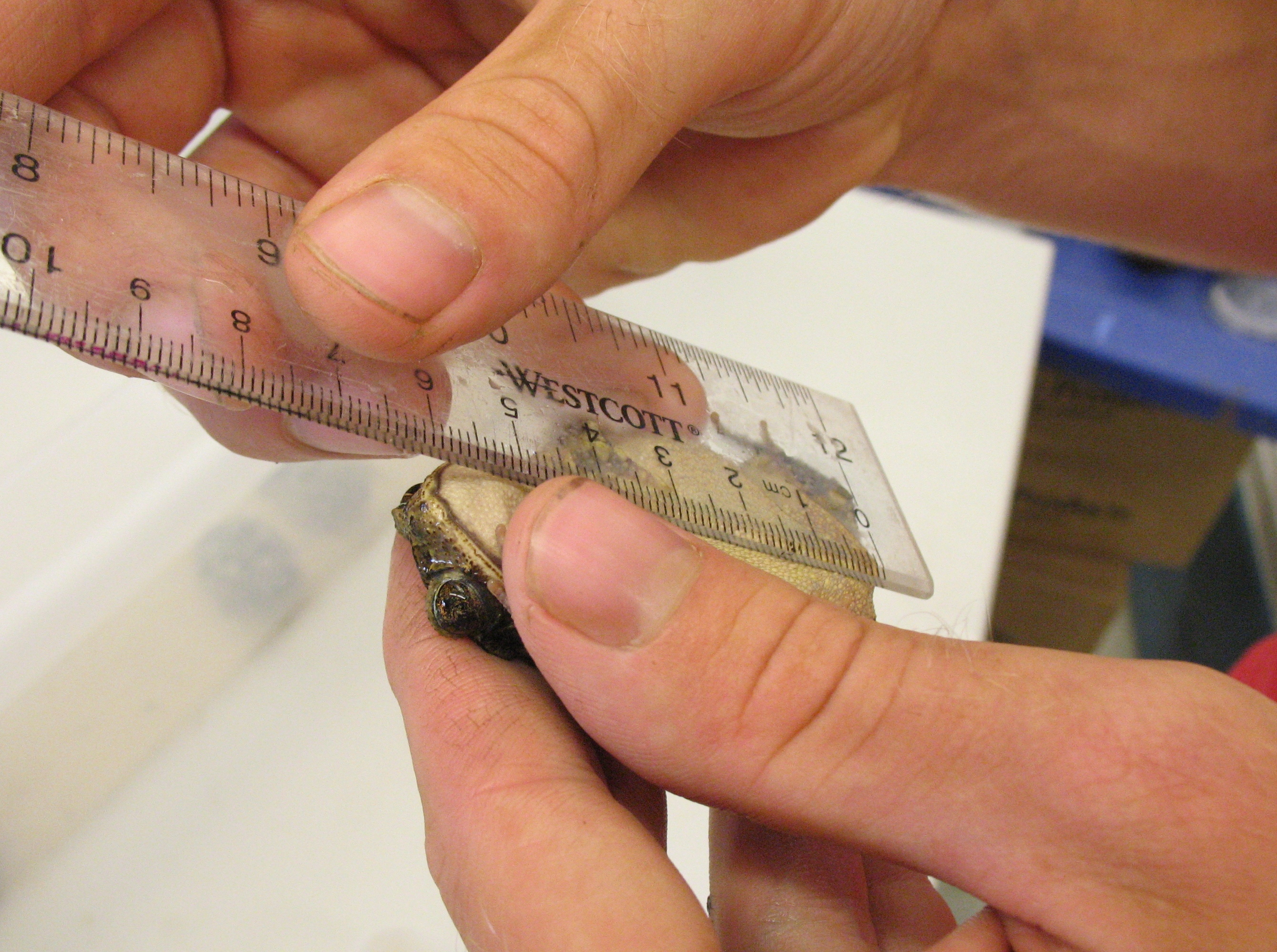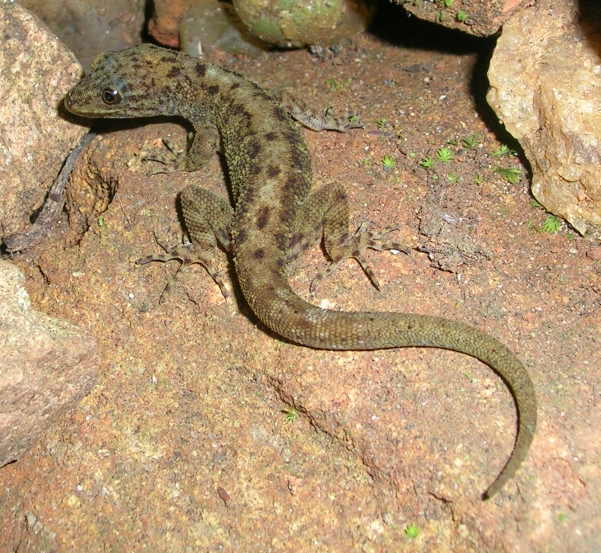|
Cnemaspis Cavernicola
''Cnemaspis cavernicola'', the cave-dwelling dwarf gecko, is a species of dwarf gecko that was found in Pakkamalai Reserve Forest in Tamil Nadu, India. It is a small species, with snout–vent length of and tail length of , giving a maximum total length of about . Description ''Cnemaspis cavernicola'' is a small ''Cnemaspis'', with a snout–vent length Snout–vent length (SVL) is a morphometric measurement taken in herpetology from the tip of the snout to the most posterior opening of the cloacal slit (vent)."direct line distance from tip of snout to posterior margin of vent" It is the mos ... of less than 34 mm. The arrangement of scales on the dorsum is heterogeneous, with weakly keeled, granular scales in the vertebral and paravertebral regions, intermixed with about two or three regularly arranged rows of large, weakly keeled tubercles on each side of flank. The tubercles in lowest row are the largest and spine-like. There are 4–6 rows of dorsal tubercles. The ve ... [...More Info...] [...Related Items...] OR: [Wikipedia] [Google] [Baidu] |
Gecko
Geckos are small, mostly carnivorous lizards that have a wide distribution, found on every continent except Antarctica. Belonging to the infraorder Gekkota, geckos are found in warm climates. They range from . Geckos are unique among lizards for their vocalisations, which differ from species to species. Most geckos in the family Gekkonidae use chirping or clicking sounds in their social interactions. Tokay geckos (''Gekko gecko'') are known for their loud mating calls, and some other species are capable of making hissing noises when alarmed or threatened. They are the most species-rich group of lizards, with about 1,500 different species worldwide. All geckos, except species in the family Eublepharidae lack eyelids; instead, the outer surface of the eyeball has a transparent membrane, the brille. They have a fixed lens within each iris that enlarges in darkness to let in more light. Since they cannot blink, species without eyelids generally lick their own brilles whe ... [...More Info...] [...Related Items...] OR: [Wikipedia] [Google] [Baidu] |
Pakkamalai Reserve Forest
Pakkamalai is a mountain and forest reserve in Villupuram district of Tamil Nadu, located 45 km southwest of Gingee. Geography Pakkamalai is steep-sided plateau that reaches an elevation of over 500 meters. In addition to being a forest reserve, Pakkamalai is a sacred forest. There is a shrine to the Goddess Durga on one of the peaks, and a temple to Perumal (Vishnu) at mid-elevation. Climate Maximum temperature ranges from 30° to 36 °C in the summer, and 24 °C during the winter months. Mean annual rainfall is 700 mm. Ecology Pakkamalai forest reserve covers an area of 22.38 km2, and the mountain's dry forests contain a mix of species characteristic of the coastal dry evergreen forests which lie to the east, and the dry deciduous forests that lie to the west in the Eastern Ghats. Typical dry evergreen species in the forests include ''Atalantia monophylla, Acacia intsia, Combretum albidum, Dichrostachys cinerea'', and ''Psydrax dicoccos'', and ty ... [...More Info...] [...Related Items...] OR: [Wikipedia] [Google] [Baidu] |
Tamil Nadu
Tamil Nadu (; , TN) is the southernmost States and union territories of India, state of India. The List of states and union territories of India by area, tenth largest Indian state by area and the List of states and union territories of India by population, sixth largest by population, Tamil Nadu is the home of the Tamil people, who speak the Tamil language—the state's official language and one of the longest surviving Classical languages of India, classical languages of the world. The capital and largest city is Chennai. Located on the south-eastern coast of the Indian peninsula, Tamil Nadu is straddled by the Western Ghats and Deccan Plateau in the west, the Eastern Ghats in the north, the Eastern Coastal Plains lining the Bay of Bengal in the east, the Gulf of Mannar and the Palk Strait to the south-east, the Laccadive Sea at the southern Cape (geography), cape of the peninsula, with the river Kaveri bisecting the state. Politically, Tamil Nadu is bound by the Indian sta ... [...More Info...] [...Related Items...] OR: [Wikipedia] [Google] [Baidu] |
Snout–vent Length
Snout–vent length (SVL) is a morphometric measurement taken in herpetology from the tip of the snout to the most posterior opening of the cloacal slit (vent)."direct line distance from tip of snout to posterior margin of vent" It is the most common measurement taken in herpetology, being used for all amphibians, lepidosaurs, and crocodilia Crocodilia () is an order of semiaquatic, predatory reptiles that are known as crocodilians. They first appeared during the Late Cretaceous and are the closest living relatives of birds. Crocodilians are a type of crocodylomorph pseudosuchia ...ns (for turtles, carapace length (CL) and plastral length (PL) are used instead). The SVL differs depending on whether the animal is struggling or relaxed (if alive), or various other factors if it is a preserved specimen. For fossils, an osteological correlate such as precaudal length must be used. When combined with weight and body condition, SVL can help deduce age and sex. Advantag ... [...More Info...] [...Related Items...] OR: [Wikipedia] [Google] [Baidu] |
Cnemaspis
''Cnemaspis'' is a genus of diurnal (day) geckos found in Asia. With over 100 species, it is one of the most diverse genera of geckos. Molecular phylogenies suggest that the two regional groupings may form distinct clades which are not each other's closest relatives. Description Species in this genus have slender, clawed digits which are cylindrical or depressed at the base (rarely dilated); the distal phalanges are compressed, forming an angle with the basal portion of the digits, the lower surface of which has a row of plates. Their bodies are more or less depressed, granular or tubercular above. Tail not compressed. Pupil circular; eyelid distinct all round the eye. Males with or without pre-anal or femoral pores. Species The Indian Subcontinent and Sri Lanka group *'' C. aaronbaueri'' Sayyed, Grismer, Campbell & Dileepkumar, 2019 *'' C. adii'' C. Srinivasulu, Kumar & B. Srinivasulu, 2015 – Adi's day gecko *'' C. agarwali'' Khandekar, 2019 – Agarwal's dwarf ge ... [...More Info...] [...Related Items...] OR: [Wikipedia] [Google] [Baidu] |
Reptiles Of India
Reptiles, as commonly defined, are a group of tetrapods with an ectothermic metabolism and amniotic development. Living traditional reptiles comprise four orders: Testudines, Crocodilia, Squamata, and Rhynchocephalia. About 12,000 living species of reptiles are listed in the Reptile Database. The study of the traditional reptile orders, customarily in combination with the study of modern amphibians, is called herpetology. Reptiles have been subject to several conflicting taxonomic definitions. In Linnaean taxonomy, reptiles are gathered together under the class Reptilia ( ), which corresponds to common usage. Modern cladistic taxonomy regards that group as paraphyletic, since genetic and paleontological evidence has determined that birds (class Aves), as members of Dinosauria, are more closely related to living crocodilians than to other reptiles, and are thus nested among reptiles from an evolutionary perspective. Many cladistic systems therefore redefine Reptilia as a ... [...More Info...] [...Related Items...] OR: [Wikipedia] [Google] [Baidu] |
Endemic Fauna Of India
Endemism is the state of a species being found only in a single defined geographic location, such as an island, state, nation, country or other defined zone; organisms that are indigenous to a place are not endemic to it if they are also found elsewhere. For example, the Cape sugarbird is found exclusively in southwestern South Africa and is therefore said to be ''endemic'' to that particular part of the world. An endemic species can also be referred to as an ''endemism'' or, in scientific literature, as an ''endemite''. Similarly, many species found in the Western ghats of India are examples of endemism. Endemism is an important concept in conservation biology for measuring biodiversity in a particular place and evaluating the risk of extinction for species. Endemism is also of interest in evolutionary biology, because it provides clues about how changes in the environment cause species to undergo range shifts (potentially expanding their range into a larger area or becomin ... [...More Info...] [...Related Items...] OR: [Wikipedia] [Google] [Baidu] |
Reptiles Described In 2023
Reptiles, as commonly defined, are a group of tetrapods with an ectothermic metabolism and amniotic development. Living traditional reptiles comprise four orders: Testudines, Crocodilia, Squamata, and Rhynchocephalia. About 12,000 living species of reptiles are listed in the Reptile Database. The study of the traditional reptile orders, customarily in combination with the study of modern amphibians, is called herpetology. Reptiles have been subject to several conflicting taxonomic definitions. In Linnaean taxonomy, reptiles are gathered together under the class Reptilia ( ), which corresponds to common usage. Modern cladistic taxonomy regards that group as paraphyletic, since genetic and paleontological evidence has determined that birds (class Aves), as members of Dinosauria, are more closely related to living crocodilians than to other reptiles, and are thus nested among reptiles from an evolutionary perspective. Many cladistic systems therefore redefine Reptilia as a clade ... [...More Info...] [...Related Items...] OR: [Wikipedia] [Google] [Baidu] |
Taxa Named By Ishan Agarwal
In biology, a taxon (back-formation from ''taxonomy''; : taxa) is a group of one or more populations of an organism or organisms seen by taxonomists to form a unit. Although neither is required, a taxon is usually known by a particular name and given a particular ranking, especially if and when it is accepted or becomes established. It is very common, however, for taxonomists to remain at odds over what belongs to a taxon and the criteria used for inclusion, especially in the context of rank-based (" Linnaean") nomenclature (much less so under phylogenetic nomenclature). If a taxon is given a formal scientific name, its use is then governed by one of the nomenclature codes specifying which scientific name is correct for a particular grouping. Initial attempts at classifying and ordering organisms (plants and animals) were presumably set forth in prehistoric times by hunter-gatherers, as suggested by the fairly sophisticated folk taxonomies. Much later, Aristotle, and later still ... [...More Info...] [...Related Items...] OR: [Wikipedia] [Google] [Baidu] |






